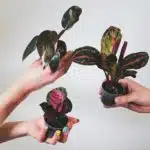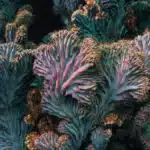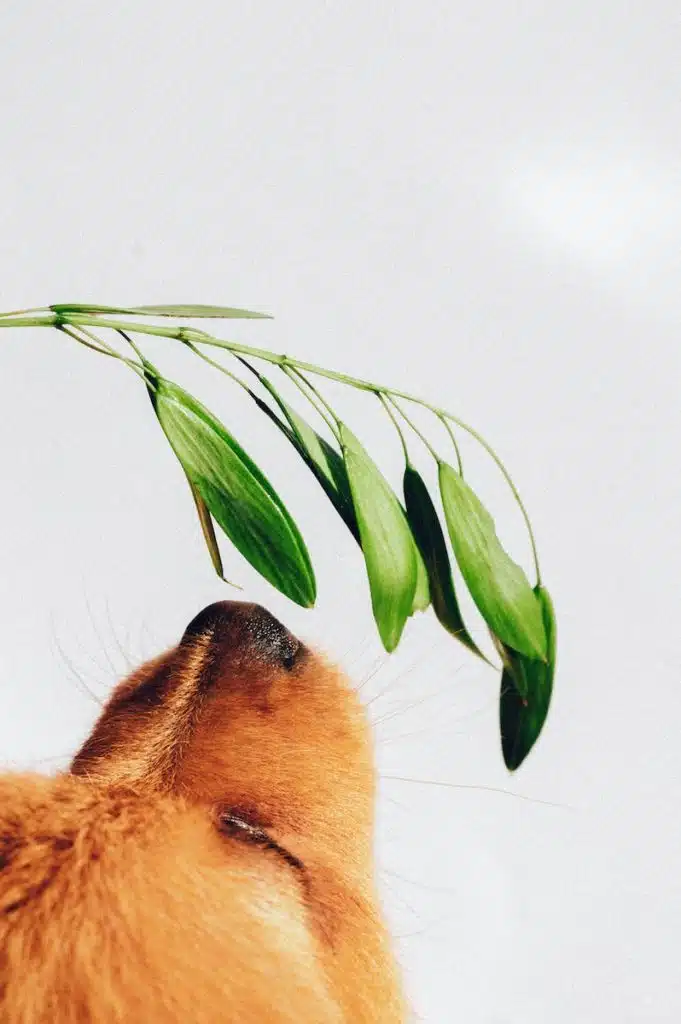
The Complete Guide to Dog-Safe Plants for an Indoor Jungle: Unleash Your Dog’s Paradise
Welcome to our comprehensive guide on creating a dog-friendly indoor jungle. Fill your home filled with stunning houseplants that are safe for your furry friends. Whether you’re a plant enthusiast or simply looking to add some greenery to your home, we’ve got you covered with our extensive list of dog-safe plants. From Calatheas to Indoor Palms you can enjoy the beauty of plants while ensuring your dog’s safety.
What Does Dog-Safe Plant Really Mean? Exploring The Safety Factors For Your Furry Friends
When we say a plant is dog-safe, what do we mean? We mean plants that don’t contain any toxic substances or harmful physical parts for dogs. It’s important to note that some plants may lack toxic substances but still have other risk factors. These can include thorns, spines, or seeds that can cause physical harm to your pooch, making them not entirely safe.
To be a dog-safe plant, a plant should be both non-toxic and friendly for your dog to explore. Many plants are labelled as dog-safe. Even so, it’s essential to prevent your dog from consuming excessive amounts of them. Some dogs will eat anything, including inedible objects, resulting in several hundred pounds on vet bills to remove socks, batteries, light bulbs, and pretty much anything else from their belly.
It’s best to keep any plant away from pets that are eager to chew on them. Hanging pots are an excellent choice to keep small to medium plants at a distance if you have a dog that likes to eat everything they find.

What Houseplants Are Safe For Dogs?
When we say a plant is dog-safe, what do we mean? We mean plants that don’t contain any toxic substances or harmful physical parts for dogs. It’s important to note that some plants may lack toxic substances but still have other risk factors. These can include thorns, spines, or seeds that can cause physical harm to your pooch, making them not entirely safe.
To be truly a truly dog-safe plant, a plant should be both non-toxic and friendly for your dog to explore. Many plants are labelled as dog-safe. Even so, it’s essential to prevent your dog from consuming excessive amounts of them. Some dogs will eat anything, including inedible objects, resulting in several hundred pounds on vet bills to remove socks, batteries, light bulbs, and pretty much anything else from their belly.
It’s best to keep any plant away from pets that are eager to chew on them. Hanging pots are an excellent choice to keep small to medium plants at a distance if you have a dog that likes to eat everything they find (like ours!).

The Safest Houseplants for Dogs: Unlocking the Secrets of Calatheas
Calatheas are completely dog-safe plants, as they don’t contain any harmful substances or parts. However, it’s important to note that these beautiful tropical plants can be a bit challenging to care for, especially for beginners. With the right knowledge and care, you can help your Calatheas thrive and add a touch of elegance to your indoor space.
Consider varieties like the Jungle Velvet (Calathea warscewiczii) with its velvet two-tone green patterned leaves and deep purple undersides. If you prefer smaller plants, the Prayer plant (Calathea ornata) with its lovely pink striped leaves can be an eye-catching choice.

Indoor Palms: Transforming Your Home into a Pet-Friendly Oasis… Are they safe?

Spider Plants and Dogs: A Perfect Combination of Beauty and Safety
Spider plants (Chlorophytum comosum) are not only safe but also renowned for their exceptional air-purifying abilities. These resilient plants thrive in almost any environment, making them a perfect choice for adorning your house and hanging off shelves. Fun fact: Spider plants were once recognized by NASA for their effectiveness in removing formaldehyde and other air pollutants.
So, with a spider plant in your home, you can enjoy cleaner air while keeping your furry friend safe.

Succulents Unveiled: Dog-Safe Options For A Beautiful Indoor Garden
Growing a succulent garden can be a bit tricky when you have a curious pooch around. While some succulent families are perfectly safe for dogs, others, like aloe vera, can cause stomach problems or be mildly toxic to them. However, fear not! We have some stunning and non-toxic succulents that can add a splash of colour and beauty to your home while keeping your furry friend safe. Consider the Zebra Plant (Haworthia fasciata) with its striking colours, the low-maintenance and soil-free Air Plant (Tillandsia), or the eye-catching Graptoveria ‘Debbie‘ with its rosette of green, pink, and purple leaves. These dog-safe succulents will elevate your indoor garden while ensuring your pup’s well-being.

Cacti and Dogs: Discover Pet-Safe Species for a Spiky Wonderland
Surprisingly, cacti don’t contain any toxic substances for dogs. However, their spines can cause physical injuries if touched or ingested. To ensure your pet’s safety, it’s advisable to place cacti in safe spots where curious pets can’t reach them easily.
Here are three mostly spine-free cacti species that provide an extra level of safety for your pets:
-
Bunny Ear Cactus (Opuntia microdasys): This low-maintenance and adorable cactus is not only safe but also edible.
-
Bishop’s Cap Cactus (Astrophytum myriostigma): With its star-shaped appearance and daisy-like flowers, this cactus is naturally spine-free.
-
Pet-Safe Dragon Fruit Cactus (Selenicereus undatus): Grow your own dragon fruit with this cactus species, which is safe for your furry friends.
Preventing Plant Munching: Effective Strategies to Keep Dogs from Eating Your Greenery
Understanding why dogs eat plants is crucial in preventing unwanted chewing incidents. Dogs may consume plants due to various reasons such as hunger, nausea, gas, or boredom.
To help you protect your plants and keep your dog safe, here are some effective strategies:
- Elevate your smaller plants. Place them in tall or hanging planters that are harder for pets to reach.
- Use diluted lemon juice as a natural deterrent. Spraying your plants with this solution can discourage dogs from approaching them while being safe for your houseplants.
- Cove the soil around plants with large rocks. This helps conceal loose dirt that attracts dogs with a tendency to dig.
- Provide your pet with their own chewing options. Offer safe plants for dogs to chew on, such as basil, chamomile, thyme, or mint, which can satisfy their plant-eating urge.
We recommend keeping your pup’s details, the vet’s contact information, and the local emergency vet clinic info nearby.
Closing Thoughts
We recommend using a dog-proof bin and storing dangerous items and substances away from your dog’s paws. Keep emergency numbers saved on your phone in case of an emergency. Include your pup’s details, your vet’s contact info, the local emergency vet clinic, and the Animal Poison Line on your list. If you suspect your dog has ingested any toxic substances, access help as soon as possible to give your dog the best chance at recovery.
At Puply
Are you ready to unwind and play with puppies? Join us for a puppy yoga session at Puply
Happier People, Happier Pups

Andreea Marin
Andreea brings a wealth of scientific and wellness knowledge and expertise to the team. Recently she has spent time with Harper Care where she: Collaborated with the engineering, design, research and coaching teams to develop a novel B2B2C mental health coaching framework used by leading fertility clinics in the UK. Led the automation of personalised wellness plans which decreased user waiting time. Educated people about wellness and mental health by publishing scientific blog articles. Developed a panel of molecular, digital and psychological biomarkers that assess wellness in collaboration with Professor Theodore Cosco, at the Precision Mental Health Lab and at the Institute of Population Ageing at the University of Oxford. Biomarkers were tested using DTC molecular testing kit and digital wellness assessments. Created a catalogue of fertility wellness interventions rooted in novel science, mind-body practices and cognitive behavioural therapy (CBT).





